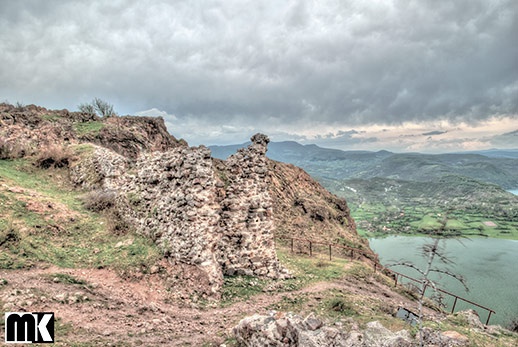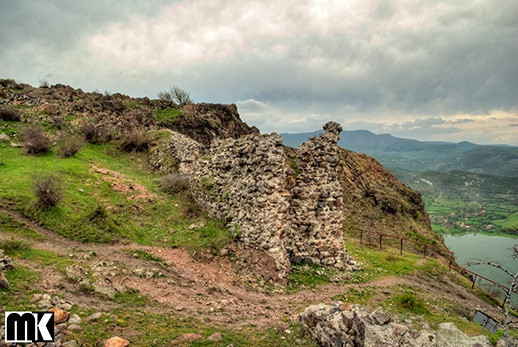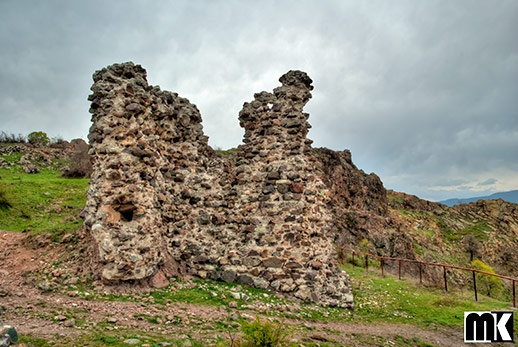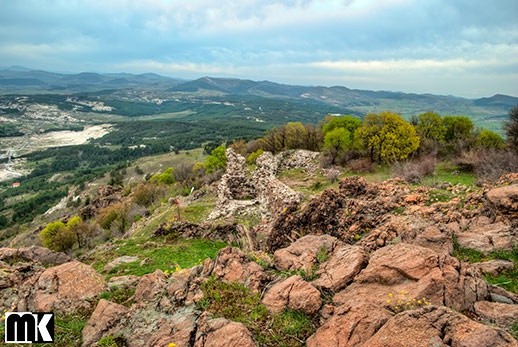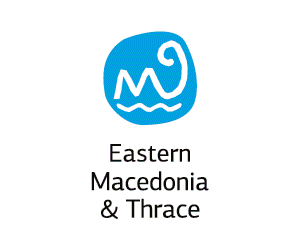Traveler's Guide
East Macedonia & Thrace
Medieval fortress Monyak
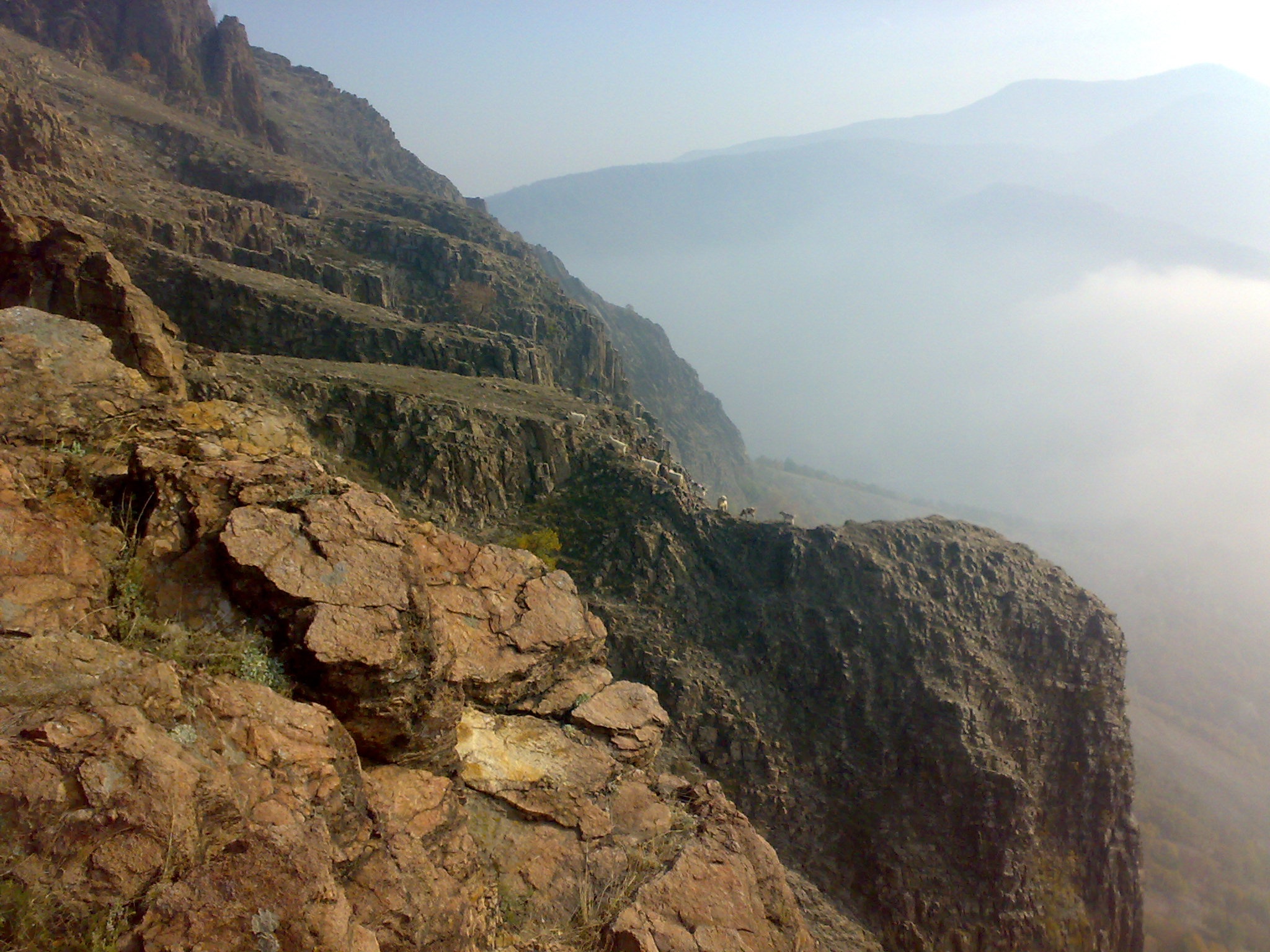
Description of site: The fortress occupies a high rock plateau, nearly inaccessible from the west and south. It is on the left bank of "Studen Kladenets" dam , about 5-6 km from Kardzhali. The site"s altitude is 586 meters and GPS coordinates: 41 ° 37"22 "N and 25 ° 27"42 "ID
The Fortress has two separate fenced sections - a city and a citadel. The outer wall encompasses the north hill and follows the rock pattern. To the northeast and southeast the fort overlooks the sheer cliff. The entranceway is on the west wall, and has a tower on each side. The main door was double, and a large wooden beam served as a lock. The north side is a thick trapezoidal bastion, the south side had several floors of which a height of nearly 8 meters has been preserved. Following the contours of the terrain, the wall continues to the south. It reaches an impassable 50- meter high cliff. The highest south plateau is occupied by a citadel with thick trapezoidal bastions built along the wall, two of which flanked the entrance which was located in the middle of the north wall. The total protected area was about 50 acres. Several buildings were located and cleared out during exploration, including a square one, located deep inside the citadel. The ground floor was dug into the rocks and probably served as a water storage. A fine building was found to the west, under the citadel.It must have had at least two floors. The lower was dug into the rock. Its walls were plastered. Four square pillars support the upstairs, whose floor is at the rocks level. There is no doubt that this served as the second water storage area. A civic building was located above it. Another multi-storey building is located at the entrance of the outer wall. The ground floor was dug in the rock, and the walls were coated with mortar. The large quantity of pottery found here shows that this floor was used for food storage. There used to be shelves for dishes on the south wall. These have fallen on the floor; however, over 20 bowls, jugs and pitchers were found intact. The entrance is from the west, guarded by two rectangular towers. The citadel occupies the highest east end of the massif. There used to be a military garrison here, while the fortress served as a refugee center during war.
The first evidence of the castle can be dated back to the Third Crusade (1189-1192) . During the journey to Palestine, the western knights captured the fortress, which was then an important Byzantine stronghold in the region. During the last decade of the twelfth century and with the passage of the army of crusaders, Mneakos was again under Byzantine control.
The fortress is connected with the crusaders in the Rhodope Mountain in 1206. The historian Geoffrey of Villehardouin, Marshal of Champagne and of Romenie (1160-1212) wrote that it was in the beautiful and fertile valley of the Art River (the Arda) where the Monyak knights learned Emperor Baldwin of Flanders had died. It was at this fortress where his brother, Henry, was crowned the last Holy Roman Emporer.
In the thirteenth and fourteenth centuries, the fortress, along with the whole Achridos area, served as the border territory between the Second Bulgarian Empire and the Byzantine Empire. Because of its strategic location, it provided residence for the governors of Achridos, including several famous Byzantine generals.
Mneakos was so well-fortified that it was the only fortress in Achridos that Michael Asen II failed to conquer in 1254,when he tried to regain the region occupied by the Byzantines.
In the years 1254-1255, the young Tsar Michael Asen II, who had lost territories at the beginning of his reign,embarked on a quest to regain them. An extract from "History" by George Akropolit, a book dealing with the situation in the Rhodopes at the time, says the following: ... " Stenimahos, Peristitsa and Krichim were seized right away along with everything in Achridos except Mneakos, which was the only reserved for Romans" ....
“ The city, which withstood the attacks, was successfully unlocked by the defendant shot from the Emperor Theodore II Lascaris. Appointed a governor of Mora’s (Achridos) regional center at the time was the talented military leader Filantropin Duke Alexis. Another famous governor who stayed at Monyak was the renowned Byzantine aristocrat of Bulgarian origin, John Asen, a descendant of the escaped in 1278 in Byzantium King John Asen III. John Asen was archon of Melenikon (Melnik) and then in 1343 he was appointed archon here for Mora.
He was the strategist who resisted the atacks of King John Alexander in 1343 and then Mneakos remained unconquered by Bulgarians. For a few months the area had two archons – a Bulgarian in Perperikon and Byzantine in Monyak. Eventually John Asen outweighed his countrymen and earned the title of Despot and ruled the Rhodope region and the Aegean.
Address
No information available.Contact Information
No information available.
